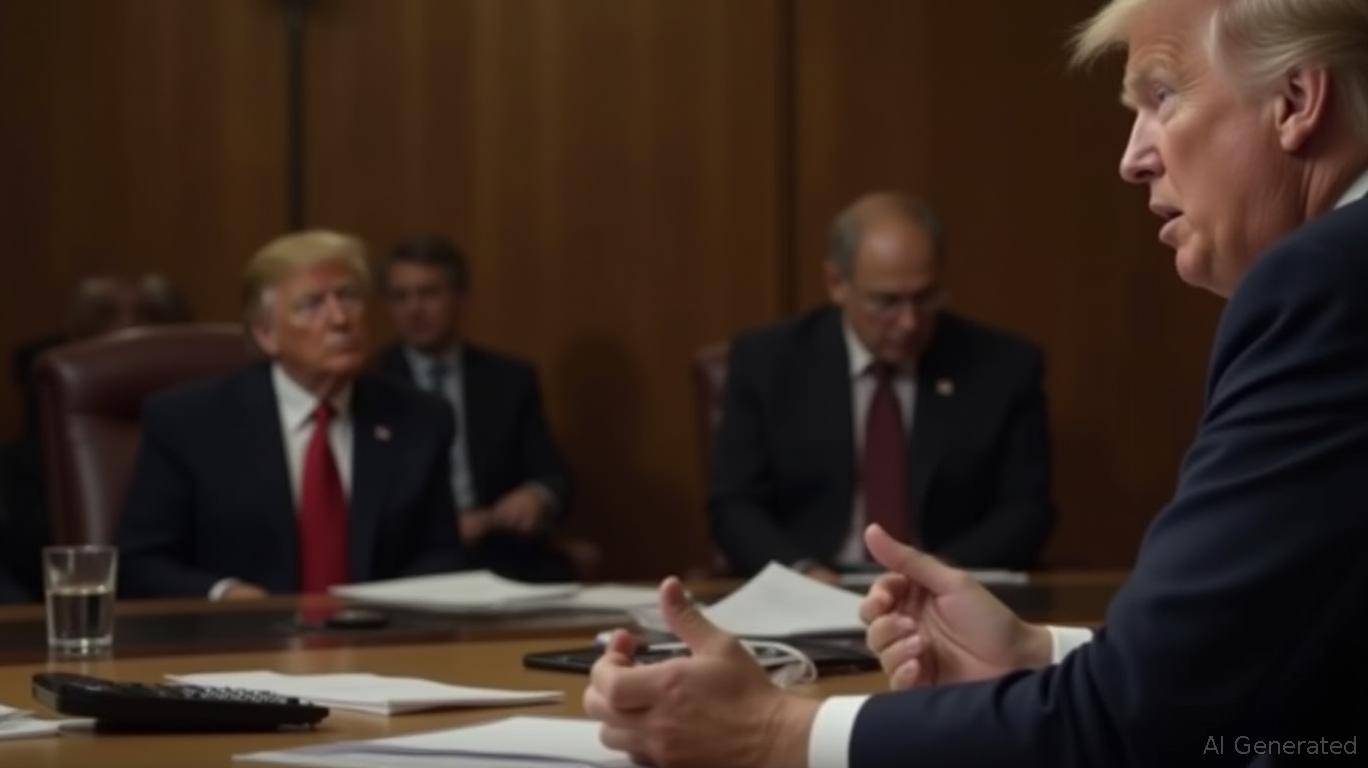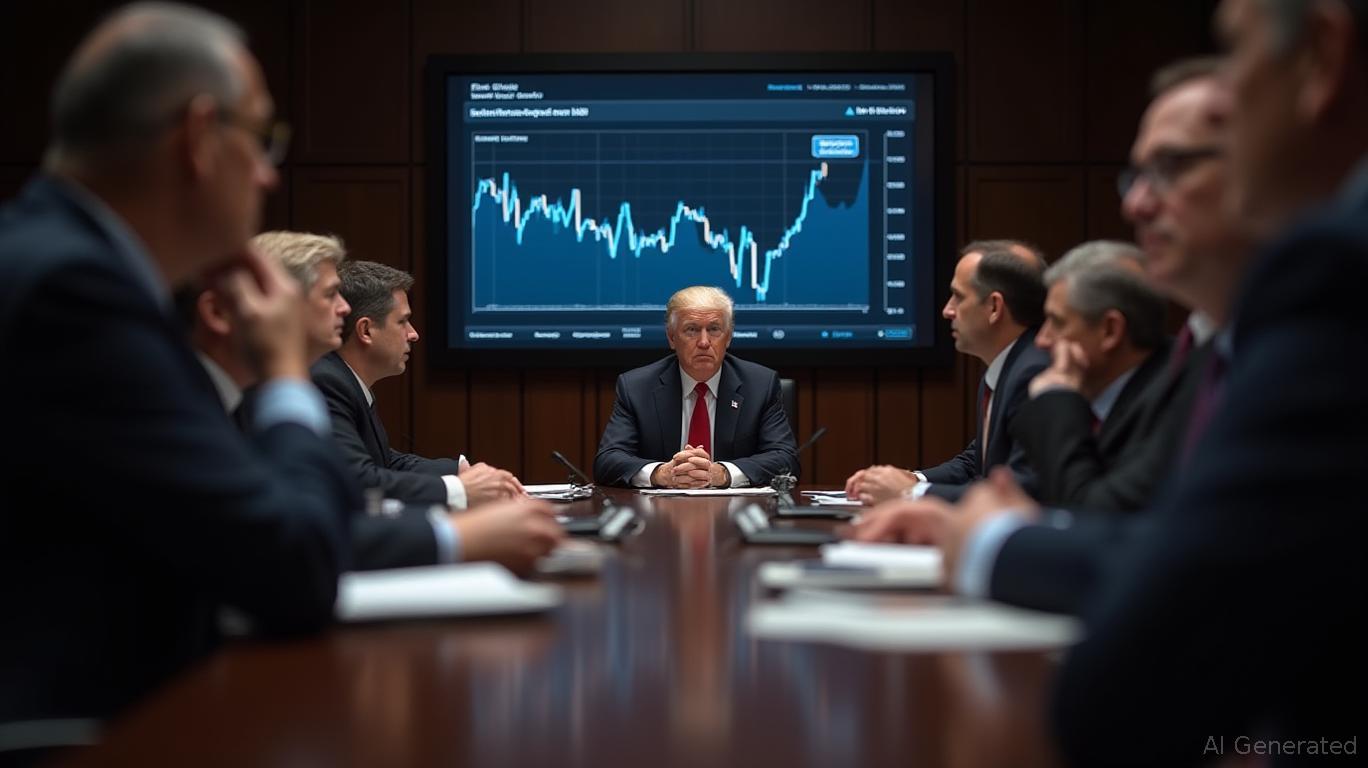Japan’s JPYC Emerges as a Contender Against the Dollar in the Stablecoin Market
- Japan's JPYC stablecoin, launched by JPYC Inc., is the first yen-backed digital currency fully compliant with Payment Services Act regulations. - Operating on Ethereum, Avalanche, and Polygon, it aims for 10 trillion yen circulation by 2026 through fee-free transactions and bond interest revenue. - Japanese firms like Densan System and Asteria are integrating JPYC for payments, while SMBC and other banks explore competing yen-pegged stablecoins. - Japan's 2023 regulatory framework and growing crypto adop
JPYC, a stablecoin backed by the Japanese yen, has become the first of its kind in Japan, representing a major milestone in the country's stablecoin sector. The token, introduced by fintech company JPYC Inc. on October 27, is pegged 1:1 to the yen and is fully collateralized with yen deposits and government bonds. It adheres to the strict requirements of Japan’s Payment Services Act, according to
JPYC Inc., which registered as a fund transfer service provider with Japan’s Financial Services Agency in August, launched JPYC EX, a platform dedicated to issuing and redeeming the token. To use the service, participants must verify their identity using Japan’s My Number card, ensuring adherence to anti-money laundering laws, TradingView noted. The company has set a goal to reach 10 trillion yen (about $65.4 billion) in circulation within three years, a figure that is still a small portion of the $183.2 billion market capitalization of leading stablecoin

The debut of JPYC has attracted attention from Japanese companies interested in adopting the stablecoin for their business operations. Densan System, a fintech company, is building payment solutions for retail and e-commerce using JPYC, while Asteria, an enterprise software provider, plans to integrate the token into products used by more than 10,000 businesses. Crypto wallet firm HashPort has also announced support for JPYC transactions, TradingView reported.
Japan’s regulatory framework has played a crucial role in the development of stablecoins. Since June 2023, the country has required stablecoin issuers to register under the Funds Settlement Act and Banking Act, a move that has encouraged innovation while maintaining oversight. Other financial institutions, such as Sumitomo Mitsui Banking Corp. (SMBC), are also exploring stablecoin projects, often collaborating with blockchain companies like Ava Labs, according to TradingView.
The introduction of JPYC comes amid a global surge in stablecoin usage. The market, largely led by U.S. dollar-linked tokens like USDT and
To encourage adoption, JPYC is initially waiving transaction fees, instead earning revenue from interest on government bonds. Experts like Tomoyuki Shimoda from Rikkyo University believe that widespread use could take two to three years, reflecting Japan’s measured approach, according to
As Japan continues to tighten its regulations, including possible new rules that would let banks hold cryptocurrencies as investments, the environment is becoming increasingly competitive for stablecoins. JPYC’s launch highlights the growing importance of digital assets in transforming payment systems both in Japan and worldwide.
Disclaimer: The content of this article solely reflects the author's opinion and does not represent the platform in any capacity. This article is not intended to serve as a reference for making investment decisions.
You may also like
"Brazil and United States Seek Trade Agreement as World Turns Toward Protectionism"
- Brazil's Lula and Trump discussed a trade deal during their ASEAN summit meeting, with Lula claiming Trump "guaranteed" a resolution despite U.S. tariffs on Brazilian goods. - The U.S. imposed 50% tariffs in July over legal actions against Bolsonaro, which Lula called "mistaken," presenting a written defense during talks. - Lula highlighted Brazil's $410B trade surplus with the U.S. and urged Trump to leverage Brazil's regional influence, including Venezuela diplomacy. - Brazil resumed chicken exports to

Fed Balances Delicately as Trump Urges Rate Reductions While Inflation Concerns Persist
- FOMC to cut rates by 25 bps in October 2025, second cut this year, targeting 3.75%-4% range. - Cooling labor market and subdued inflation drive decision, with manufacturing/retail data to shape future adjustments. - Consumers see limited relief: mortgage rates near 6.34%, credit card rates at 20.03% remain largely unaffected. - Trump pressures Fed for aggressive cuts, but officials warn against inflation risks from tariffs and immigration policies. - Markets expect 1% rate cuts by 2026 end, with mortgage

XRP News Today: Indian Judiciary Acknowledges Cryptocurrency as Property, Establishing a Landmark for Investor Protections
- India's Madras High Court ruled crypto as property, blocking WazirX from redistributing a user's 3,532 XRP to offset hack losses. - The decision reinforces legal protections for digital assets, setting a precedent for investor rights and clearer regulatory frameworks. - By rejecting WazirX's "socialization of losses" plan, the court emphasized crypto custody distinctions and trust obligations for unaffected assets. - Experts highlight the ruling's impact on India's crypto ecosystem, aligning with global

Fed Lowers Interest Rates as Data Remain Unclear Due to Shutdown, While Focus Shifts to Tech AI Profits and Trade Agreement
- The U.S. Fed cuts rates by 25 bps for the second consecutive meeting, signaling potential policy easing amid a government shutdown and global trade tensions. - Big Tech earnings spotlight AI monetization, with Microsoft's Azure and Amazon's AWS under scrutiny as $420B AI spending by 2026 drives growth but risks margin pressures. - A preliminary U.S.-China trade deal delays Trump's 100% tariffs and resumes soybean purchases, marking de-escalation after months of escalating tensions. - Fed's rate cut coinc
